Remnants of the interstate
Matt McCormick’s work draws from the visual and material traces of the American West. Through painting, drawing, and mixed media, he explores the space between myth and memory. Cowboys, highways, and faded symbols of Hollywood drift into view. Less as icons, more as evidence. What remains is a language shaped by time, place, and what’s left behind.
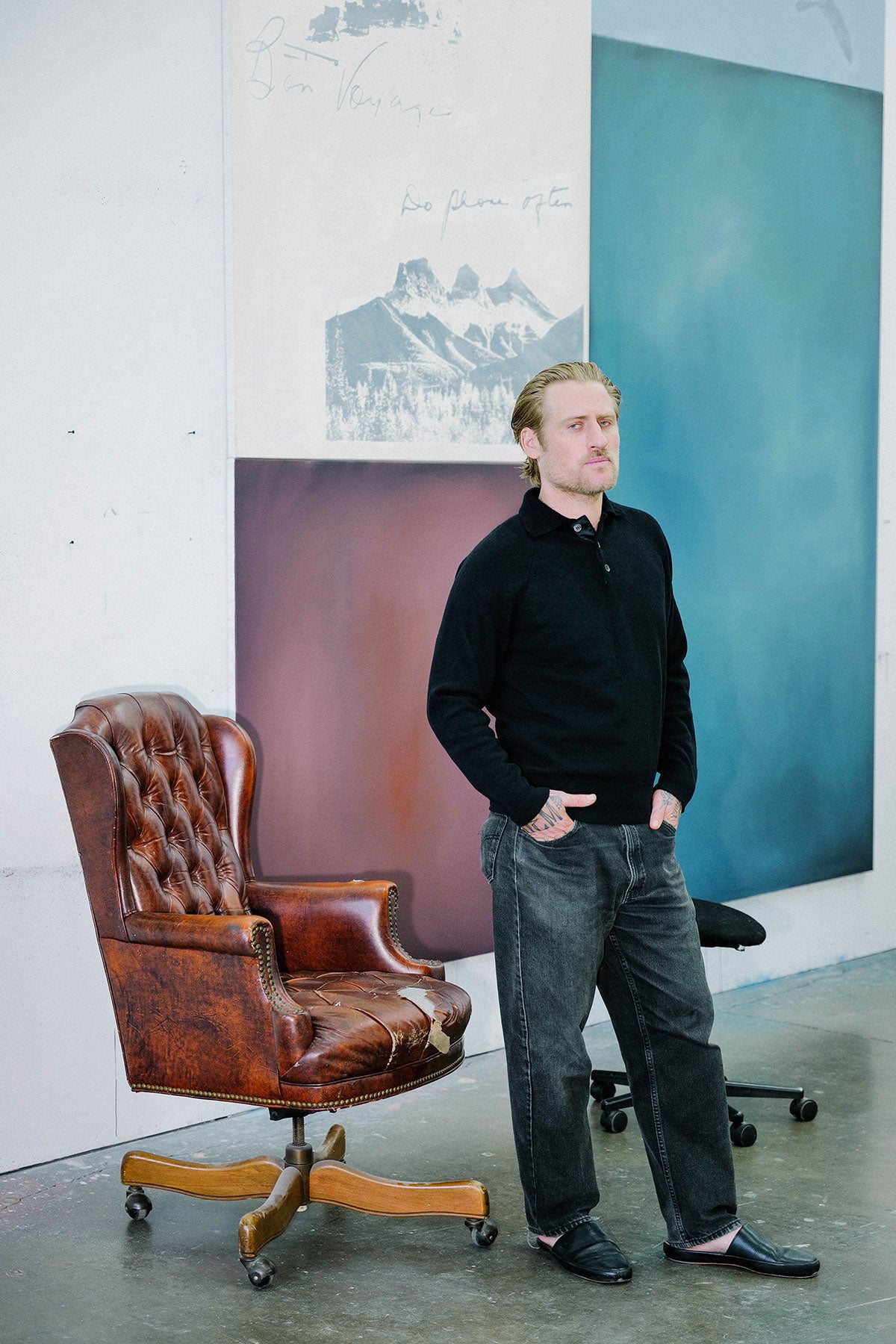
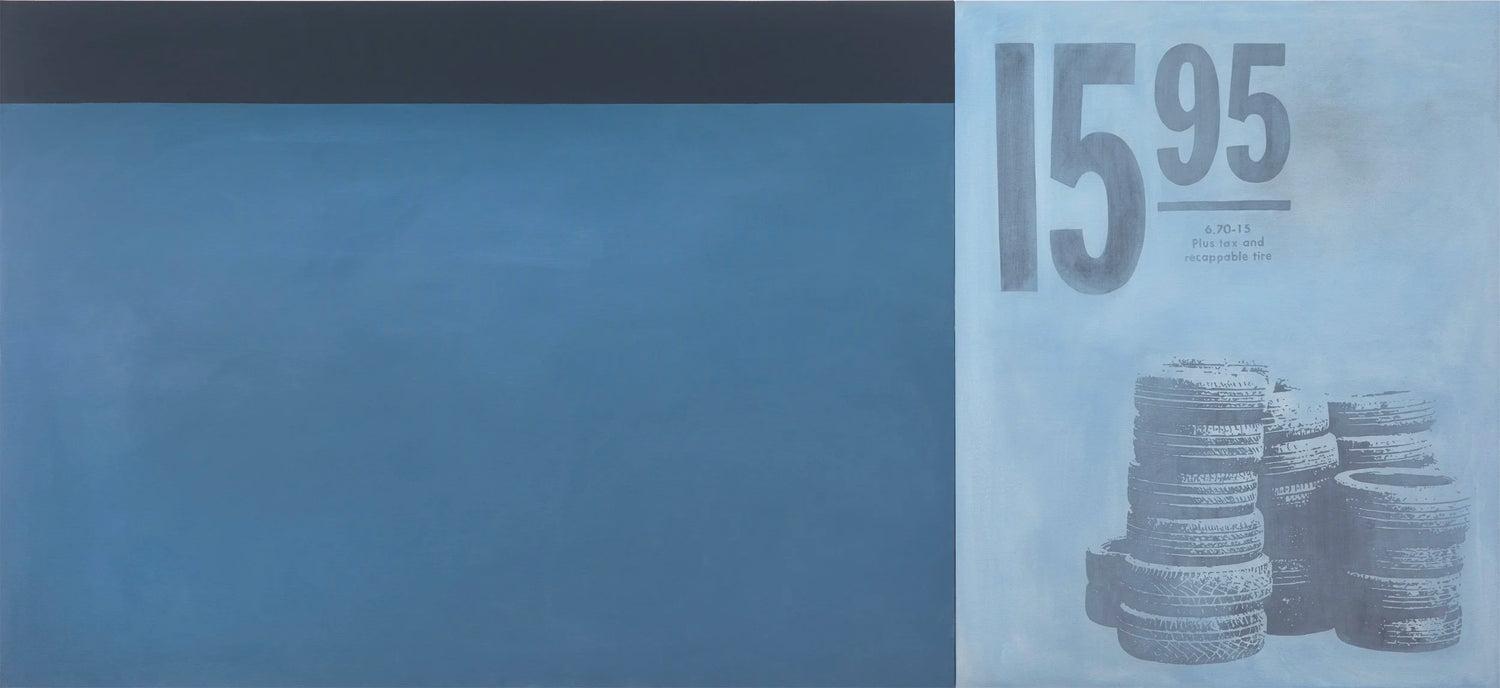
R - How would you describe the rhythm of your day?
M.M. -At this point in my life I operate on a highly regimented routine to really maximize a peaceful headspace. In typing that I recognize that that probably sounds like some sort of social media hustle bro speak, but because my life was filled with so much chaos and an inability to structure anything for so long, the older I get the more I really like to organize the day to really get the maximum amount of free time and mental space to truly feel free. So every morning is a hike with my dogs, some meditation etc, kind of the same exact thing everyday, so when I get to the studio around 11, I can let loose. There’s always music playing that changes throughout the day to kind of be the gas in the tank. It slowly revs up from very relaxing to pretty aggressive by the drive home and then dials way back to the calming jazz or whatnot when I get home at the end of the day. Rinse and repeat.
R - What role does proportion play in your work?
M.M. - Quite a bit, varies from series to series, but I would say that that is one of those often times subconscious decisions you make as an artist that separates you from the next artist. Where I choose to put a line or leave space may be the main difference from someone else.
M.M. -At this point in my life I operate on a highly regimented routine to really maximize a peaceful headspace. In typing that I recognize that that probably sounds like some sort of social media hustle bro speak, but because my life was filled with so much chaos and an inability to structure anything for so long, the older I get the more I really like to organize the day to really get the maximum amount of free time and mental space to truly feel free. So every morning is a hike with my dogs, some meditation etc, kind of the same exact thing everyday, so when I get to the studio around 11, I can let loose. There’s always music playing that changes throughout the day to kind of be the gas in the tank. It slowly revs up from very relaxing to pretty aggressive by the drive home and then dials way back to the calming jazz or whatnot when I get home at the end of the day. Rinse and repeat.
R - What role does proportion play in your work?
M.M. - Quite a bit, varies from series to series, but I would say that that is one of those often times subconscious decisions you make as an artist that separates you from the next artist. Where I choose to put a line or leave space may be the main difference from someone else.
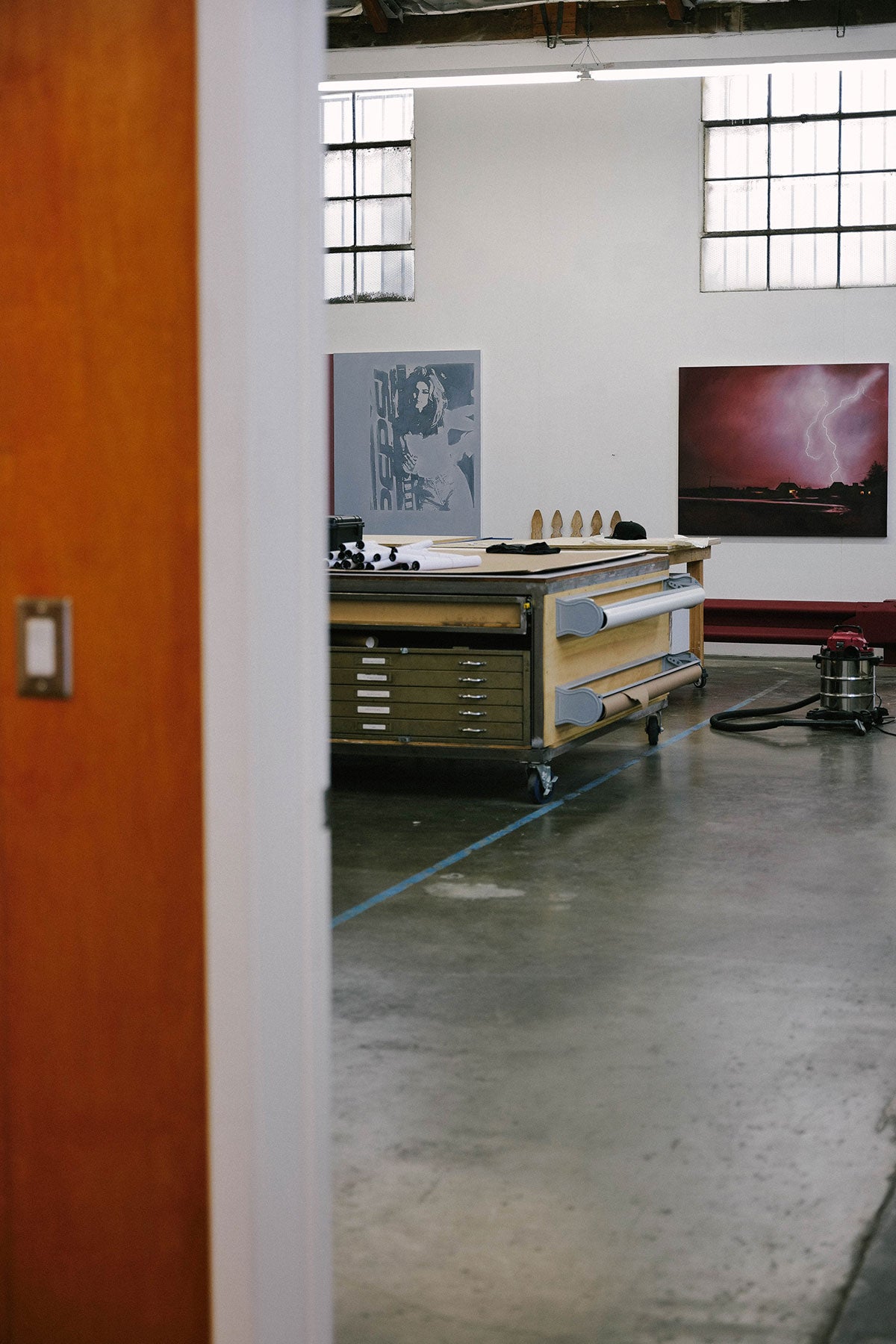
"It slowly revs up from very relaxing to pretty aggressive"
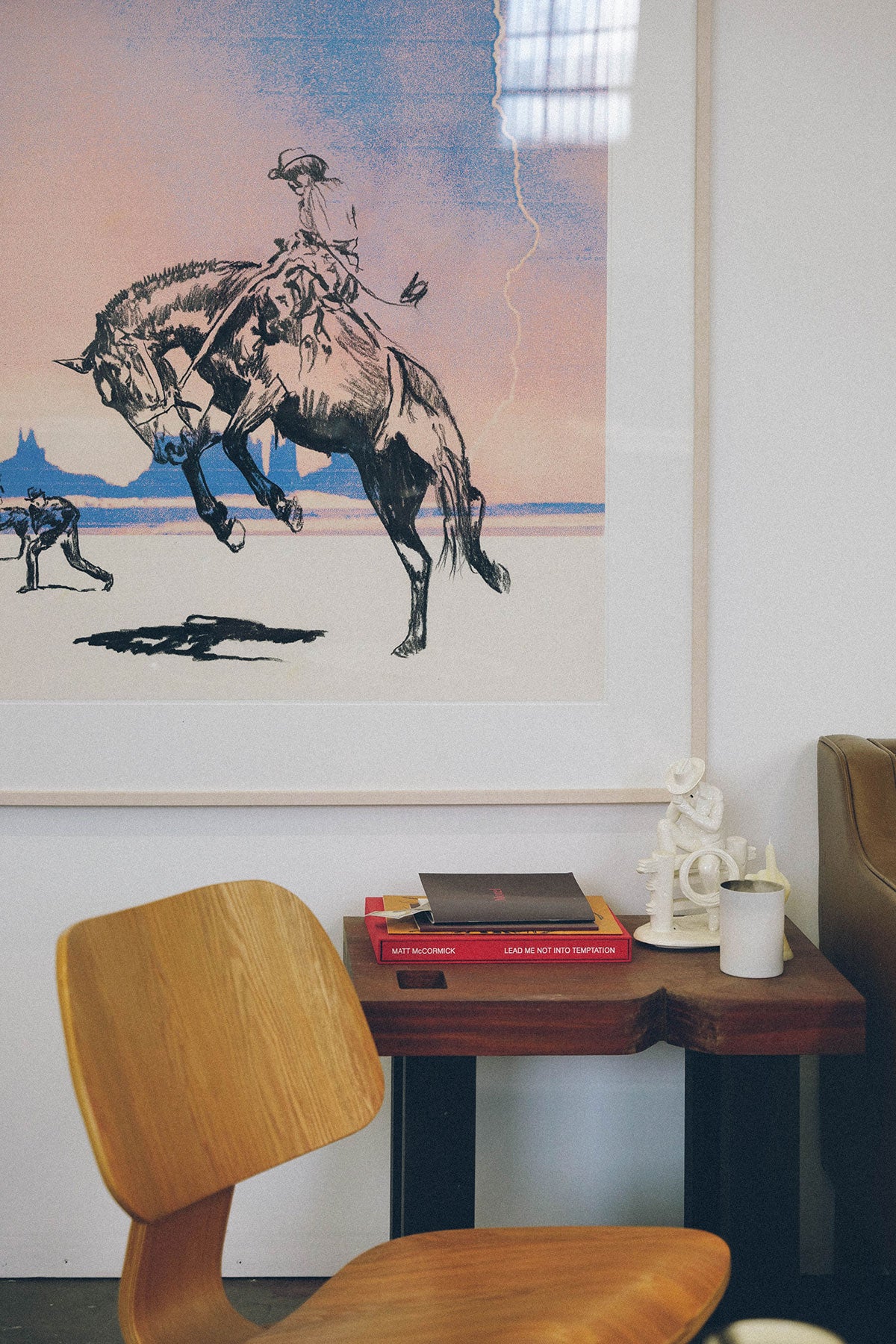

"I’m not an artist that can go do a residency"
R - What materials do you return to, and why?
M.M. - I would say that Oil, Charcoal, and Inkjet printing are the three that I work with the most often. They have all been used continuously in various bodies of work and different ways. That being said I really jump around a lot. Recently I’ve taken pride in my exhibitions having an almost group exhibition feel due to the wide variety of materials and looks to the work. As much as I romance the idea of being a traditional oil painter in the studio like my father and many other artists that I’ve long looked up to, I equally romanticize the artists that worked without constraints to any particular medium and allowed the ideas to dictate the medium.
R - Is there an object in your space that you consider essential?
M.M. - There’s so many parts that make it what it is and why it is “my space”. I’m not an artist that can go do a residency or set up shop in a remote space easily because of the many parts that are pretty impossible to travel with. If we remove the essential tools of actually making the work I would say my dogs and the music. Whenever one of those is missing for any reason, I feel incomplete and stuck.
M.M. - I would say that Oil, Charcoal, and Inkjet printing are the three that I work with the most often. They have all been used continuously in various bodies of work and different ways. That being said I really jump around a lot. Recently I’ve taken pride in my exhibitions having an almost group exhibition feel due to the wide variety of materials and looks to the work. As much as I romance the idea of being a traditional oil painter in the studio like my father and many other artists that I’ve long looked up to, I equally romanticize the artists that worked without constraints to any particular medium and allowed the ideas to dictate the medium.
R - Is there an object in your space that you consider essential?
M.M. - There’s so many parts that make it what it is and why it is “my space”. I’m not an artist that can go do a residency or set up shop in a remote space easily because of the many parts that are pretty impossible to travel with. If we remove the essential tools of actually making the work I would say my dogs and the music. Whenever one of those is missing for any reason, I feel incomplete and stuck.
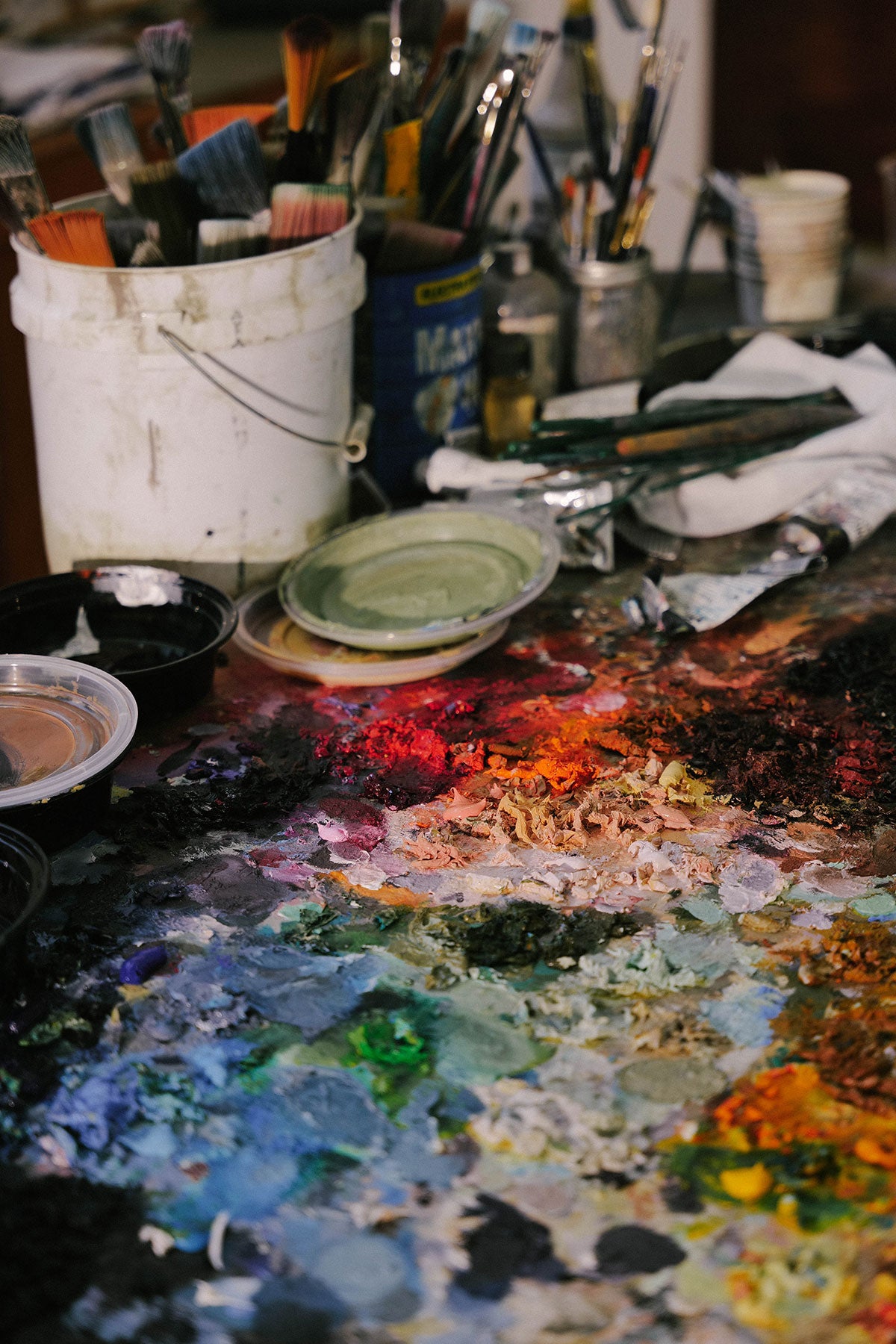

R - How do you know when something is finished?
M.M. - You just feel it. Andy Warhol said “When you stop thinking about it, it’s done”. Works for me.
R - Do you prefer continuity or change in your work?
M.M. - I love a lot of change in my work, but the goal is that no matter how it looks there is an underlying voice that carries through all the work regardless of medium, tone, subject etc.
R - What do you keep close, and what do you leave behind?
Friends/Resentments
M.M. - You just feel it. Andy Warhol said “When you stop thinking about it, it’s done”. Works for me.
R - Do you prefer continuity or change in your work?
M.M. - I love a lot of change in my work, but the goal is that no matter how it looks there is an underlying voice that carries through all the work regardless of medium, tone, subject etc.
R - What do you keep close, and what do you leave behind?
Friends/Resentments

"The reality is that nothing is truly permanent"
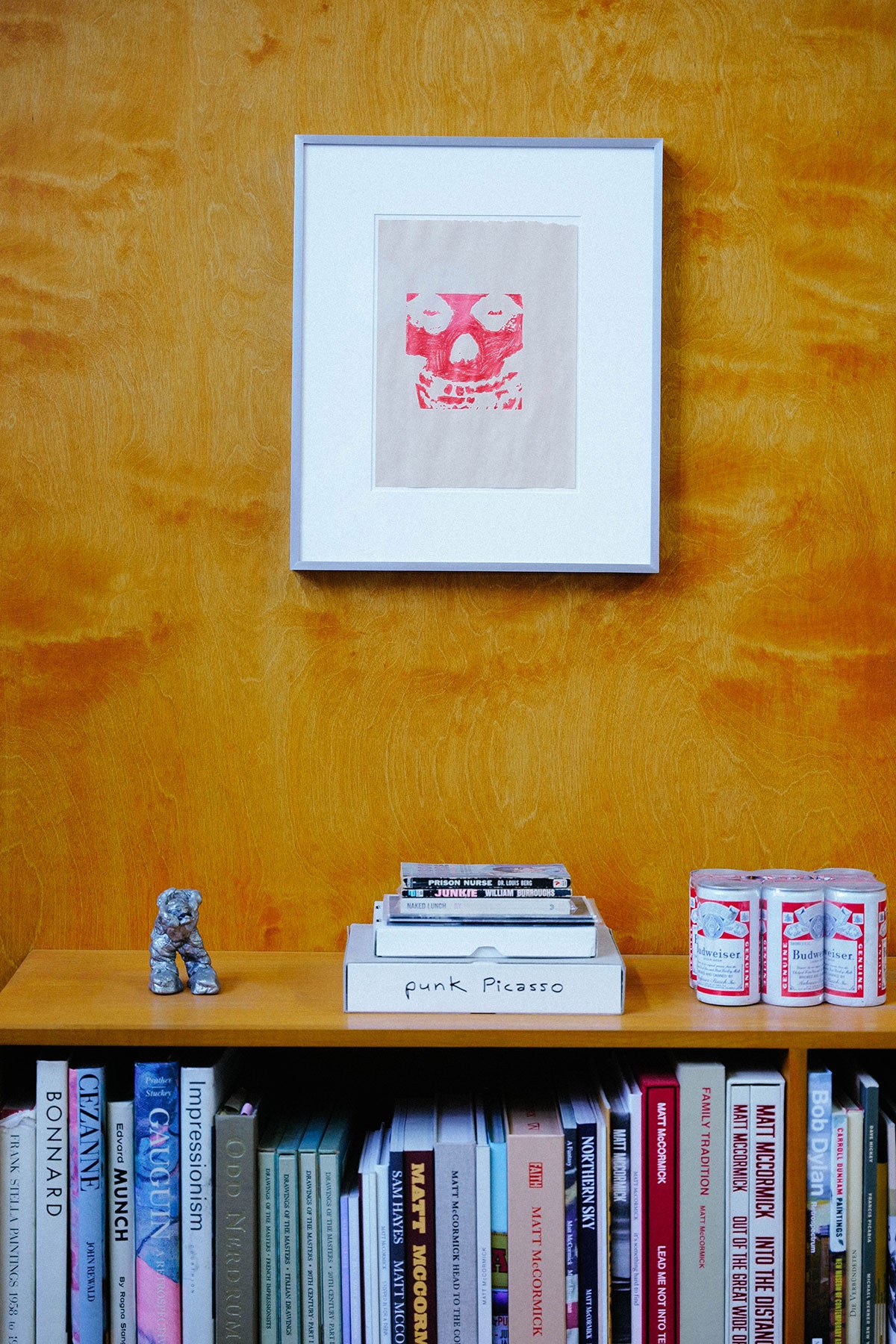
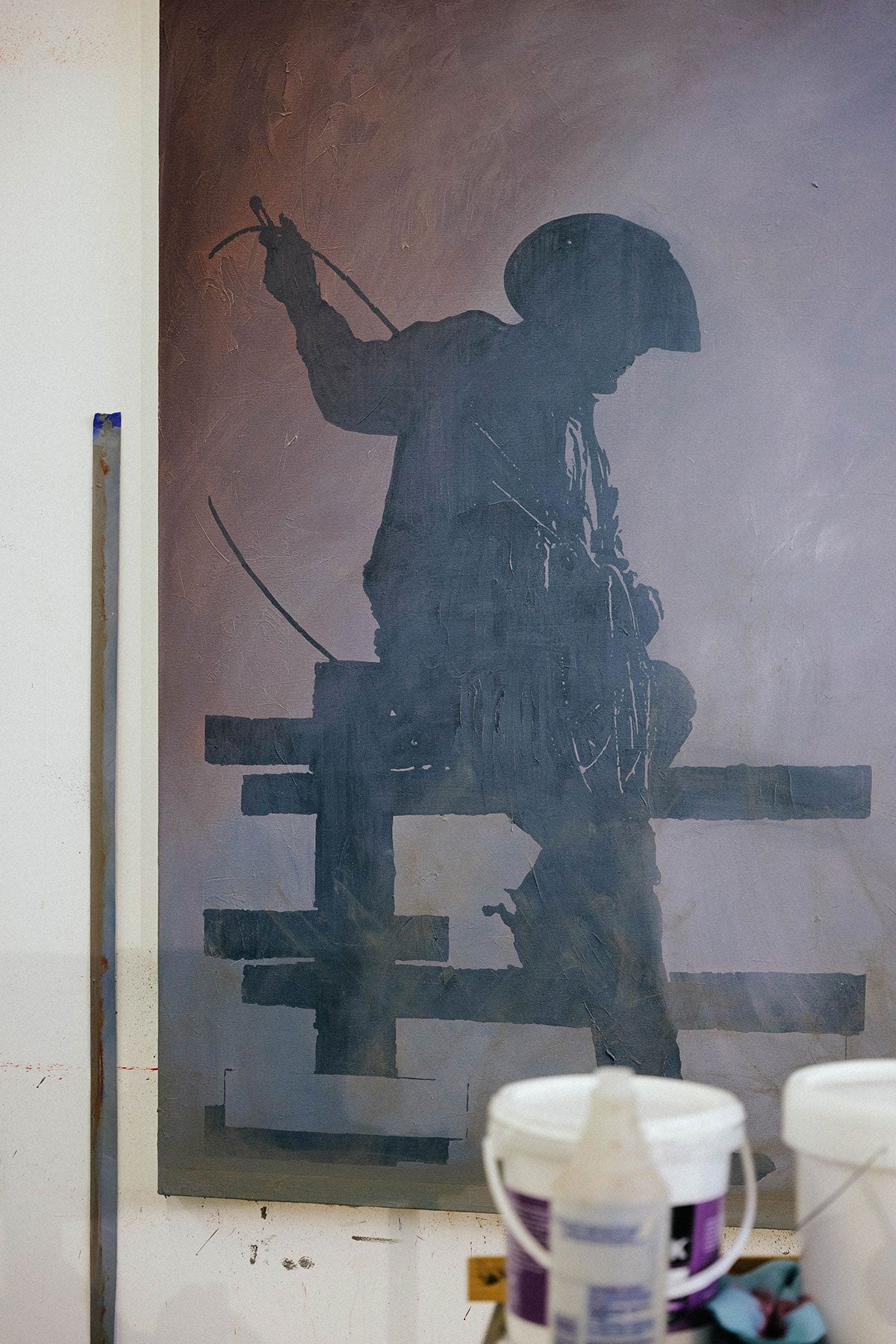
R - Is there a place that shapes your creative process?
M.M. - The studio is probably the ultimate example of that. Growing up in the home with two artist parents was huge, and moving to New York at 21 altered the course forever.
R - What does permanence mean to you?
M.M. - The work or the ideas live on past you. The reality is that nothing is truly permanent, and I am ok with that. The goal is to make the best of it while I’m around, and if anything I made or did continues on, then that would be a nice cherry on top.
R - Whose work, past or present, do you admire the most?
M.M. - So many, its like the music, depends on the time of day or year, or what I’m focused on. There’s careers I admire, there’s creative practices I admire, ways of living with the practice I admire. My parents, Brice Marden, Cy Twombly, Bruce Nauman, Warhol, Susan Rothenburg, Cady Noland, Bob Dylan, Neil Young, Ed Ruscha, Richard Prince, Steven Parrino, Jerry Garcia. Gonna stop myself there, it’s too hard to pick one. They all have influenced me in so many ways and there are so many more. Being a student of all these people and the many more that I have been privileged to discover along the way is one of the greatest gifts to my own personal practice.
M.M. - The studio is probably the ultimate example of that. Growing up in the home with two artist parents was huge, and moving to New York at 21 altered the course forever.
R - What does permanence mean to you?
M.M. - The work or the ideas live on past you. The reality is that nothing is truly permanent, and I am ok with that. The goal is to make the best of it while I’m around, and if anything I made or did continues on, then that would be a nice cherry on top.
R - Whose work, past or present, do you admire the most?
M.M. - So many, its like the music, depends on the time of day or year, or what I’m focused on. There’s careers I admire, there’s creative practices I admire, ways of living with the practice I admire. My parents, Brice Marden, Cy Twombly, Bruce Nauman, Warhol, Susan Rothenburg, Cady Noland, Bob Dylan, Neil Young, Ed Ruscha, Richard Prince, Steven Parrino, Jerry Garcia. Gonna stop myself there, it’s too hard to pick one. They all have influenced me in so many ways and there are so many more. Being a student of all these people and the many more that I have been privileged to discover along the way is one of the greatest gifts to my own personal practice.
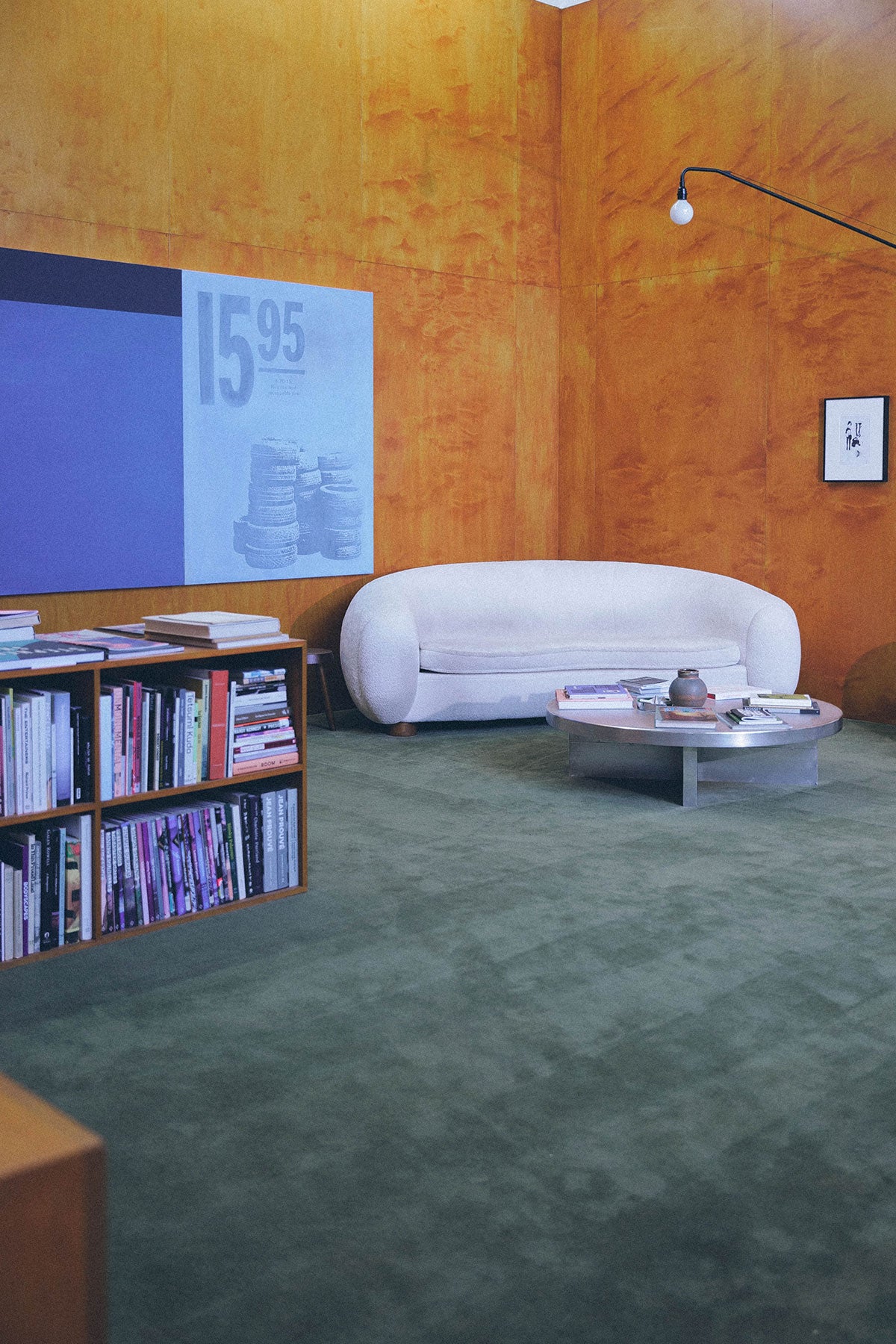
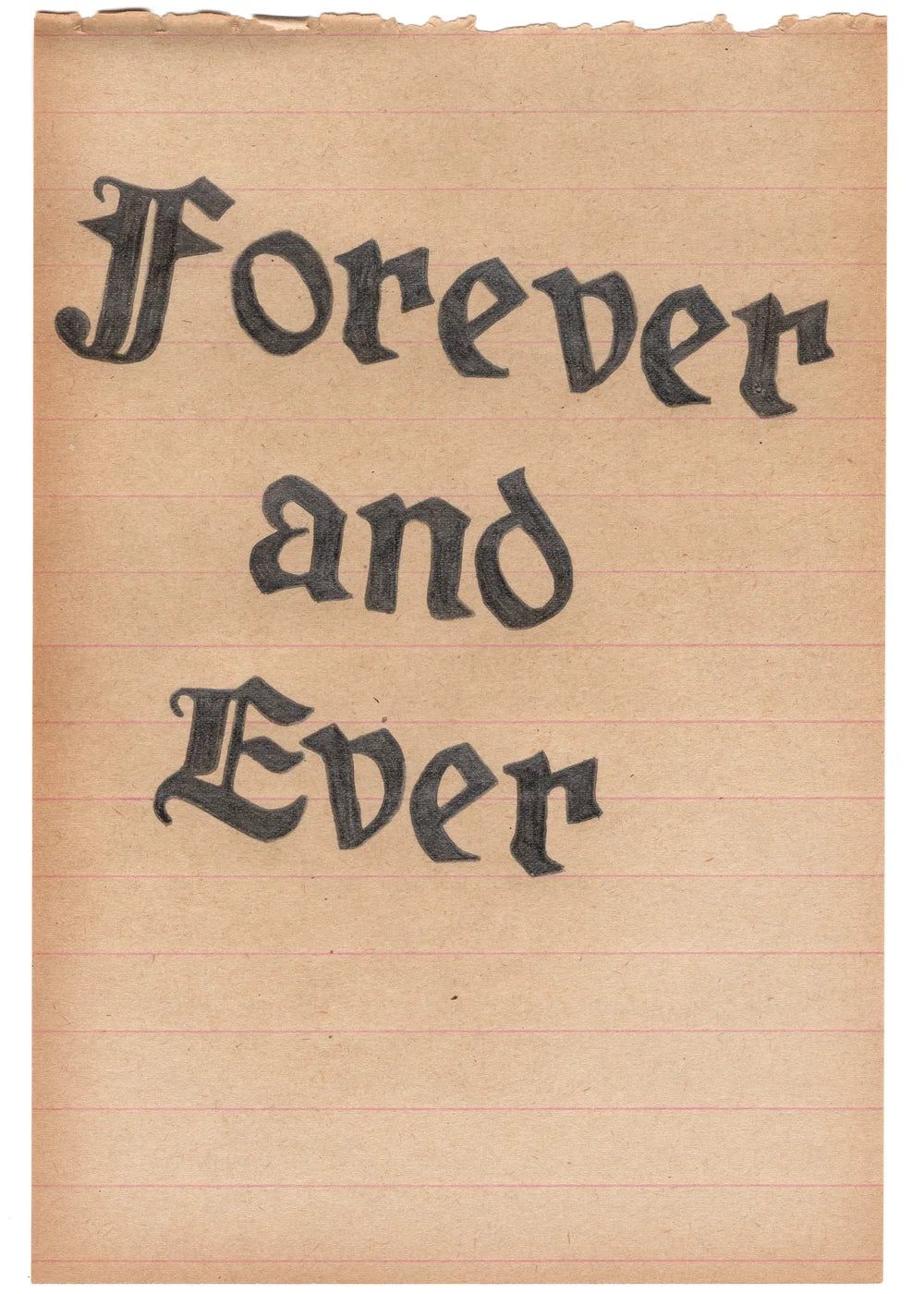



Matt McCormick b. 1987. McCormick lives and works in Los Angeles and New York. His work has been exhibited in solo and group shows in New York, Paris, Hong Kong, Miami, London, Los Angeles, Tokyo, Aspen, and San Francisco.
Matt is wearing the Standard Sportsman in Black
Matt is wearing the Standard Sportsman in Black
